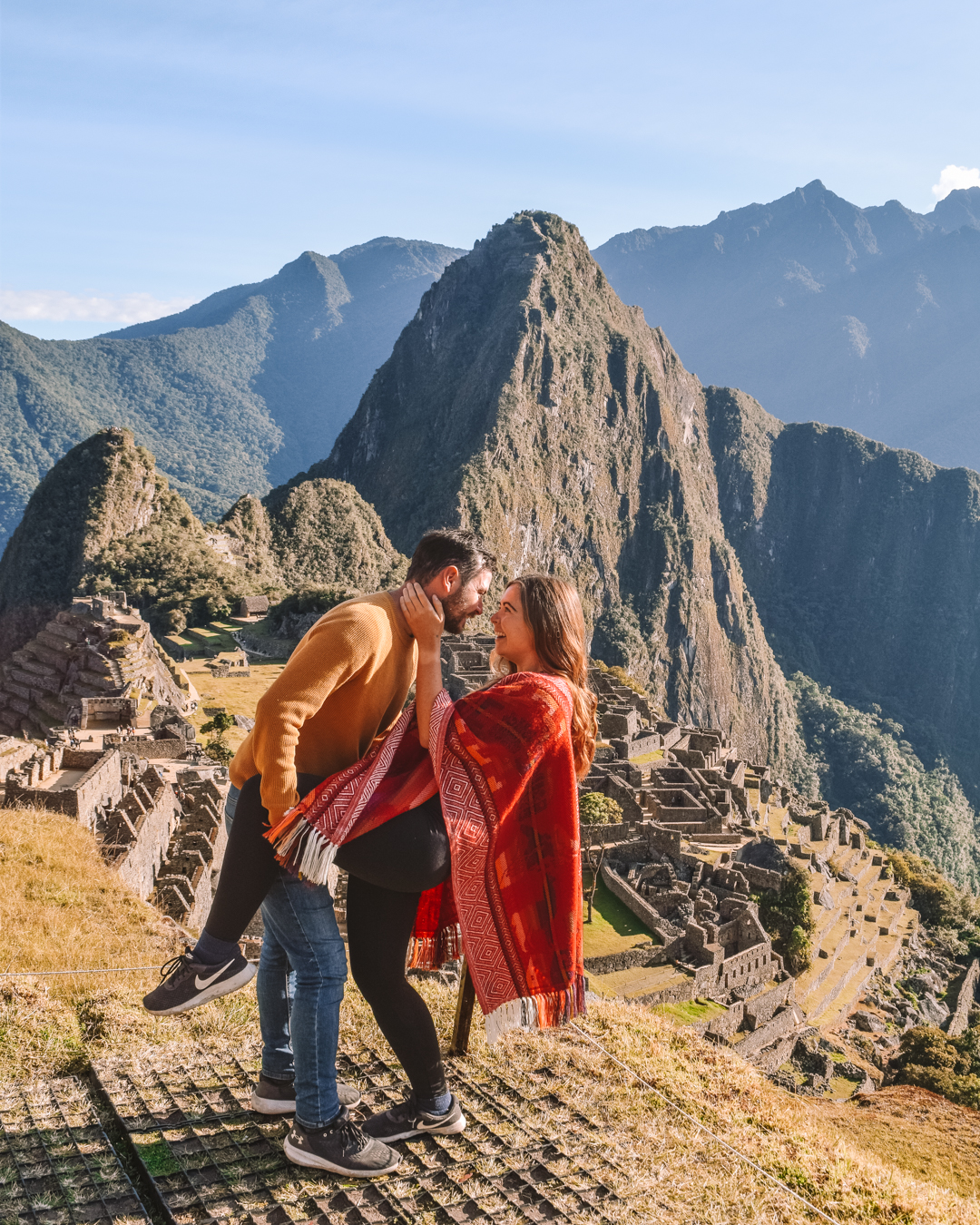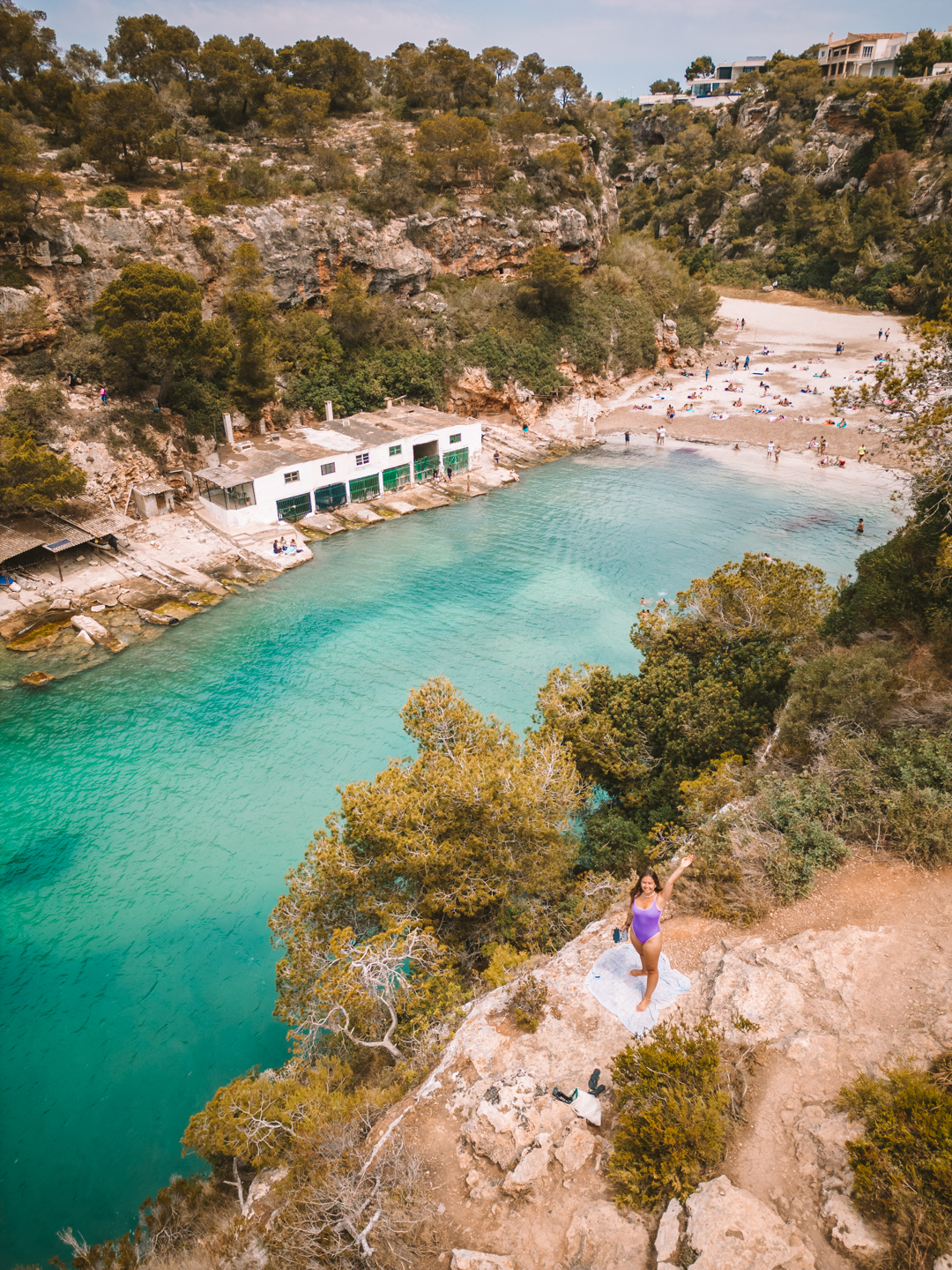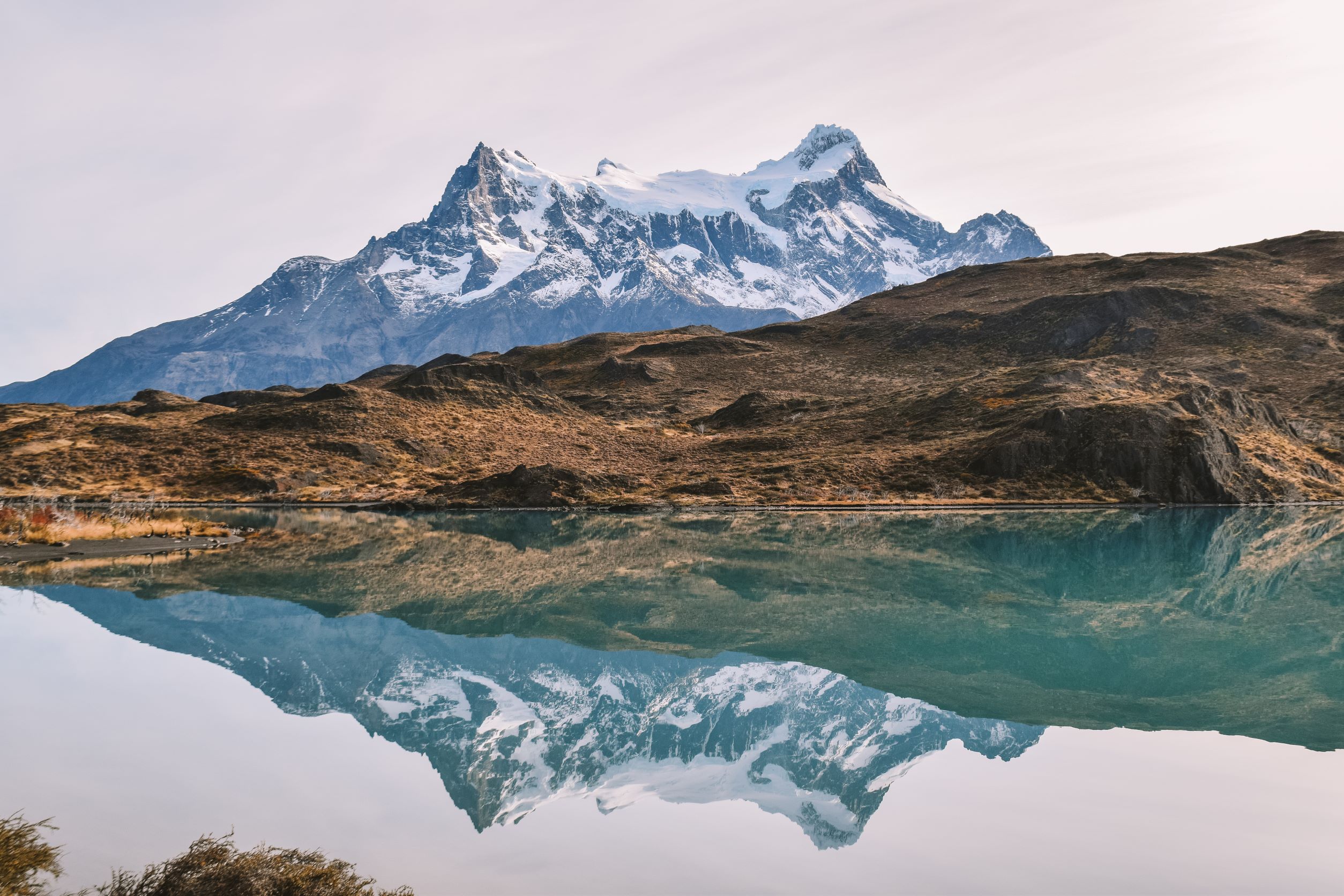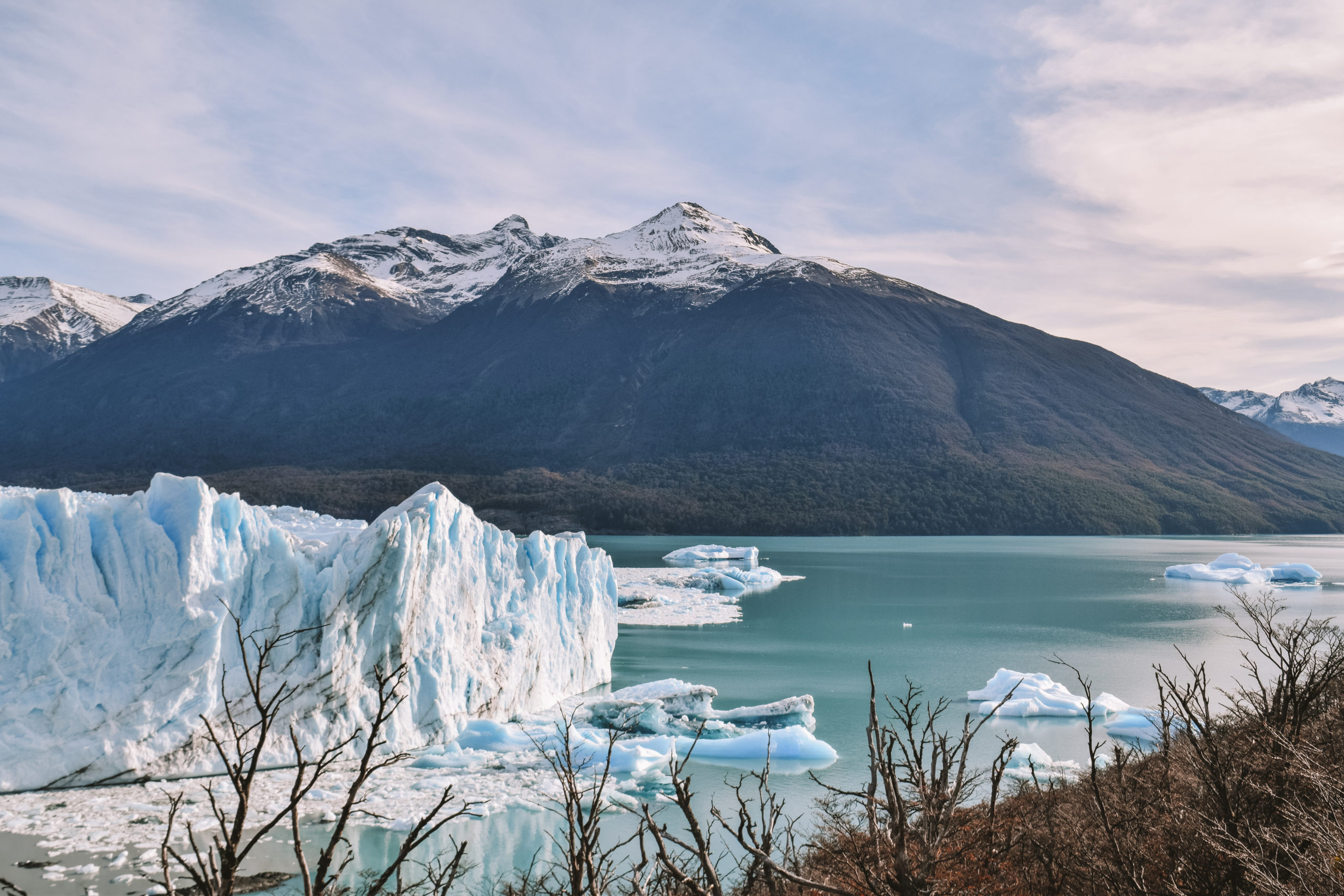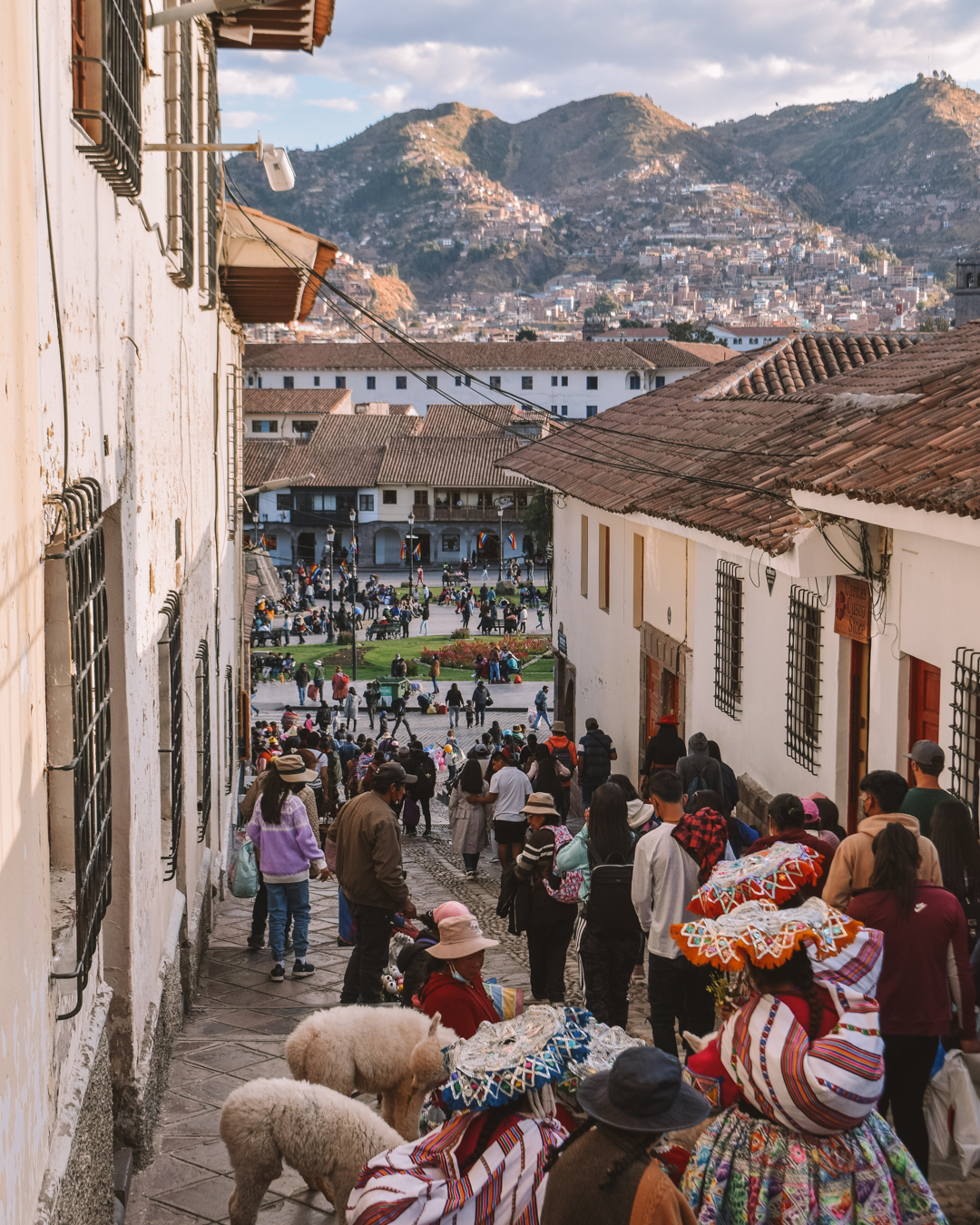Must-see spots: Our Argentina Travel highlights
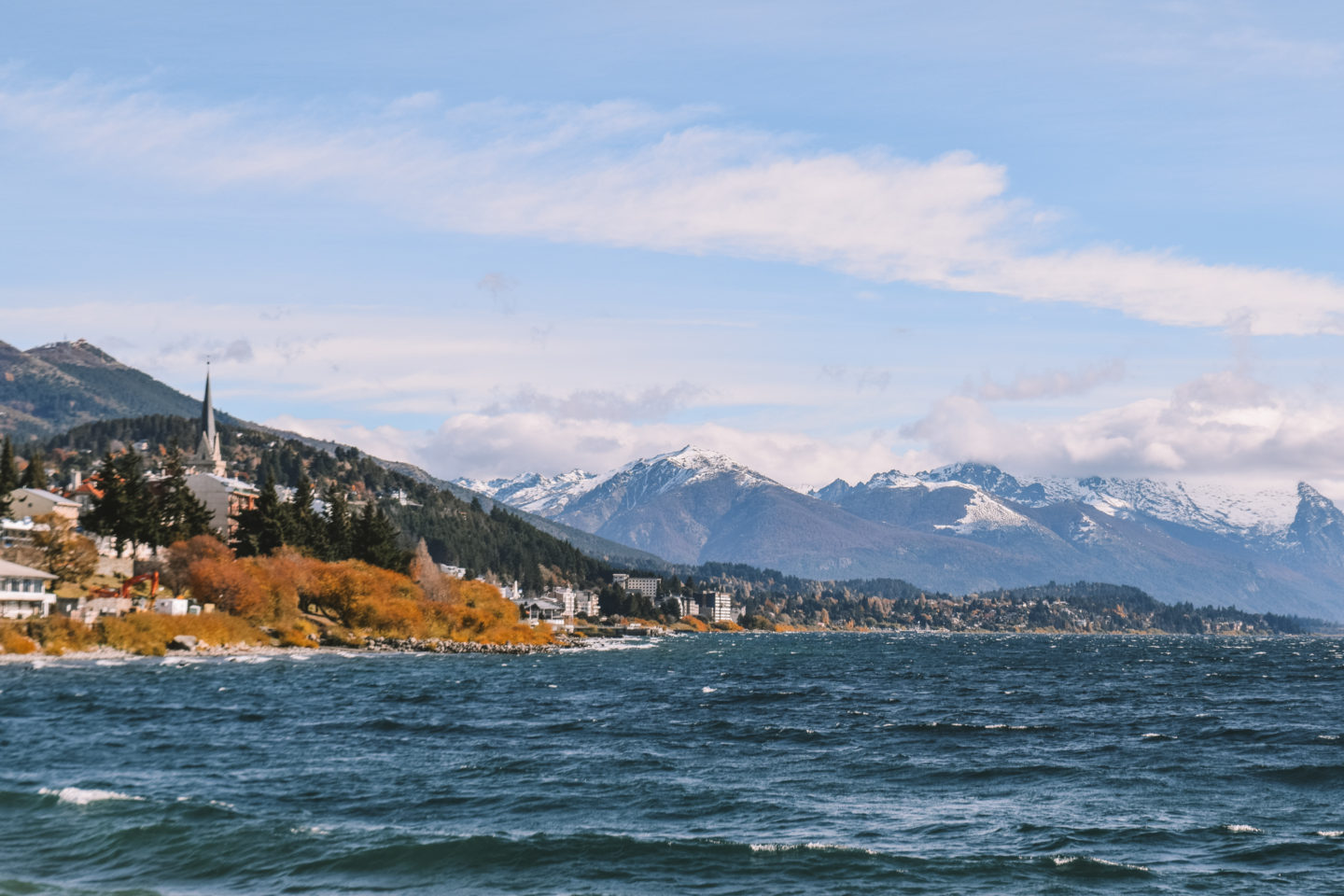
Argentina is the 8th largest country in the world (so it’s pretty massive!) and there is far more to see than most backpackers will have time for, meaning some prior research before visiting is paramount. In this post, we cover all the need-to-know information to help you plan your next trip to travel Argentina! From the best time to go to the must-visit places, the cost of backpacking Argentina, safety tips and more…
Read on to hear all about our Argentinian adventure and everything you need to know to start planning yours! If you’re planning on going all the way down to Patagonia, we recommend giving our “Road Trip Guide to Patagonia”.
Argentina travel facts:
Total time spent here: 12 days plus Patagonia
Budget: £600 each
Language: The main language of Argentina is Spanish
The official unit of currency: The Argentine Peso
Size of Argentina: 8.516 million km²
Capital of Argentinal: Buenos Aires
Transportation: To travel throughout Argentina we used a combination of internal flights and car hire. We hired a car to travel around Patagonia ourselves so that we could stop and enjoy the scenery when we wanted to. We opted to fly between Buenos Aires – Mendoza – Bariloche – Salta with Aerolíneas Argentinas each time. They are a low-cost airline that includes checked luggage with each flight, a huge money-saving bonus for us. We wouldn’t usually opt for flights, however, for example, it’s a twenty-two-hour bus journey (yes bus journeys in Argentina are long!) from Bariloche to Buenos Aires.
Visa and entry requirements: The majority of nationalities don’t need a visa to visit Argentina. Most people will be granted a 90-day stay in the country, but you may be required to show proof of onward travel when you enter. When we entered via the boat from Uruguay our passports weren’t stamped, which concerned us. However, apparently, this is totally fine and normal.
Bonus Tip
This post includes our first 3 stops in Argentina, the perfect itinerary if you’re looking to see what Argentina has to offer without venturing too far into Patagonia. If you’re looking to read about our whole trip around Argentina also read our blog post on our trip around Patagonia (coming soon).
Due to Argentina’s currency being unstable, they have a thing called the ‘Blue Collar Rate’. If you haven’t visited Argentina then you might not have heard of it, however, if you’re in the country then it’s definitely something to keep in mind. The blue-collar rate is the unofficial Argentina Peso rate. Instead of getting roughly 123 ARS to 1 USD, we were getting 207 to 1 USD, turning a quite expensive country into a fairly cheap one.
There are 2 ways in which you can get the blue-collar rate.
1. Exchange USD
Bring USD with you to Argentina and change them to ARS with one of the street sellers, we didn’t find this to be the most cost-effective way, however, it is great if you have USD with you. Keep in mind you get a better exchange rate for higher dollar bills. You will find sellers in most large towns and cities shouting “Cambio, Cambio” or if you are in Buenos Aires then Florida Street is the main place to find them. Don’t be afraid to haggle a bit and ask a few before settling on your price.
2. Use Western Union
The second and what we found to be the most beneficial and easiest way was to use Western Union. Simply download the app, transfer how much money you want in cash across to it then go to your nearest Western Union (they can be found in most main towns) and show them your confirmation code and you’ll be given the amount in ARS with the blue-collar rate. We even paid for our 30-day car hire with cash we had just withdrawn from Western Union. Just be mindful that sometimes in the smaller towns, there is a cap on how much you can withdraw and sometimes they even run out of money, so don’t completely rely on this option. However, for our 1.5 months in Argentina, we didn’t have an issue once (except for having to return the following day to collect our cash as they had run out). They also sometimes charge a fee but we managed to get around this by either finding free codes for this online or sometimes the fee just didn’t show for one of us. However, even if it did it still works out a pretty good deal with the fee.
Buenos Aires
The capital of Argentina and a wonderful city right across the water from Montevideo, Uruguay. Buenos Aires is a wild mixture of flamboyant, colourful buildings, bars and restaurants, rough-around-the-edges outer buildings and crips new skyscrapers. But, somehow it all mixes and just works. We absolutely loved our time here and felt it was the first city that we explored during our time in Latin America that we could (if it was a lot closer to home) see ourselves living in.

Where did we stay in Buenos Aires?
As we’d stocked up with our blue-collar rate (we know we keep mentioning it, but you really shouldn’t forget to get it!) we decided to treat ourselves to a hotel a little more expensive than we would normally opt for. We stayed at the Grand View Hotel Buenos Aires which had some of the largest hotel rooms we have stayed in. It was also fairly centrally located and included a basic buffet breakfast.
What did we see in Buenos Aires?
The capital really is an epic place to start if you want a taster of Argentina. There’s so much to see and you could easily spend a week or two exploring and still not even touch the surface. It’s home to some incredible architecture, wonderful restaurants, bars and coffee shops and tons of history. We spent 3 nights here and loved every second of it.
The top things to do when visiting Buenos Aires are:
Plaza de Mayo
A great plaza to spend some time walking around, Plaza de Mayo includes Florida Street so it’s a great place to start and get your blue-collar rate.
Visit San Telmo Market
This colourful, crowded Sunday street fair – the Feria de San Telmo – draws over 12,000 people each week and is home to over 270 stalls, a place not to be missed if you’re in Buenos Aires on a Sunday!
Tour the President’s Pink House: Casa Rosada
…Or just marvel at it from the outside. Casa Rosada is an incredibly beautiful pink building that is the official residence of the President of Argentina.
Explore La Boca and the Caminito Street Museum
Unfortunately, we didn’t make it here. However, these colourful streets are the epitome of Buenos Aires and Argentina as a whole.
El Ateneo Grand Splendid
Named the most beautiful bookshop in the world, located in Santa Fe this incredible bookshop is well worth a look around.
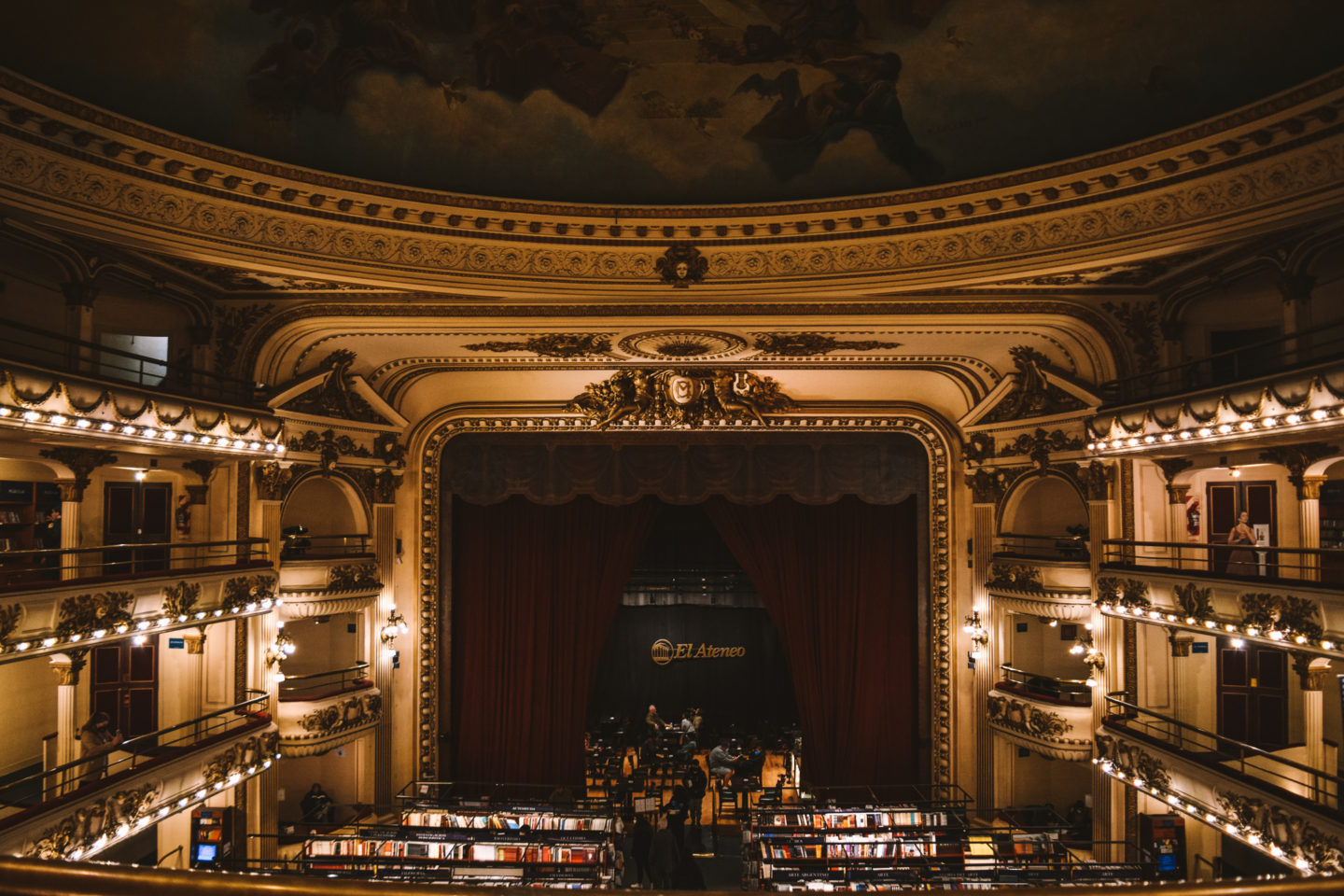
Mendoza
The wine capital of Argentina! If you love a glass or two of Malbec then Mendoza is the place to visit. Filled with beautiful sprawling vineyards, a cute city centre and incredible restaurants you could easily spend at least a week here sampling the wine amazing and wandering the cobbled streets. A must-see in Mendoza is the Uco wine region.

Where did we stay in Mendoza?
To really get an idea of what Mendoza has to offer we stayed in 3 different places! Each was great for different areas and different budgets.
These were:
La Rufina B&B – A cute and very friendly B&B located in Mendoza city center. The perfect spot to stay if you’re looking to explore the city centre.
Lares de Chacras – A beautiful boutique hotel located within walking or cycling distance of tons of local vineyards.
What did we see in Mendoza?
When planning your trip to Mendoza the main thing to do is, naturally, a wine tour. Mendoza is most famous for its Malbec, however, it excels in a wide variety of red and white wines with small batches of sparkling also beginning to be produced. There are 3 main wine regions within Mendoza, with the most popular being the newest and the highest Uco Valley. Located around a 2-hour drive outside Mendoza, Uco Valley is set within the foothills of the Andes, set at 5,000 feet the high altitude makes Uco Valley a really unique destination and the wine is really, really good!
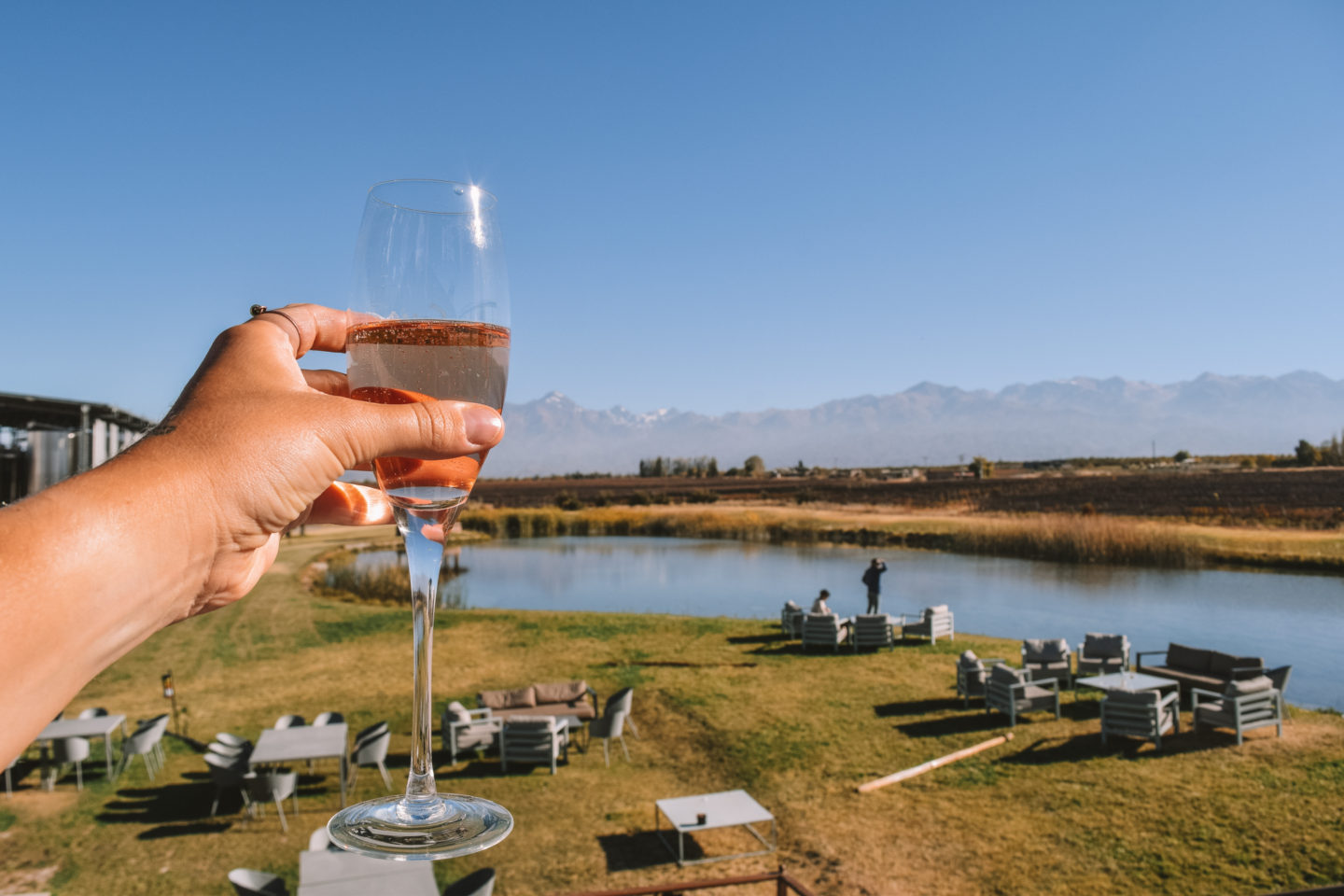
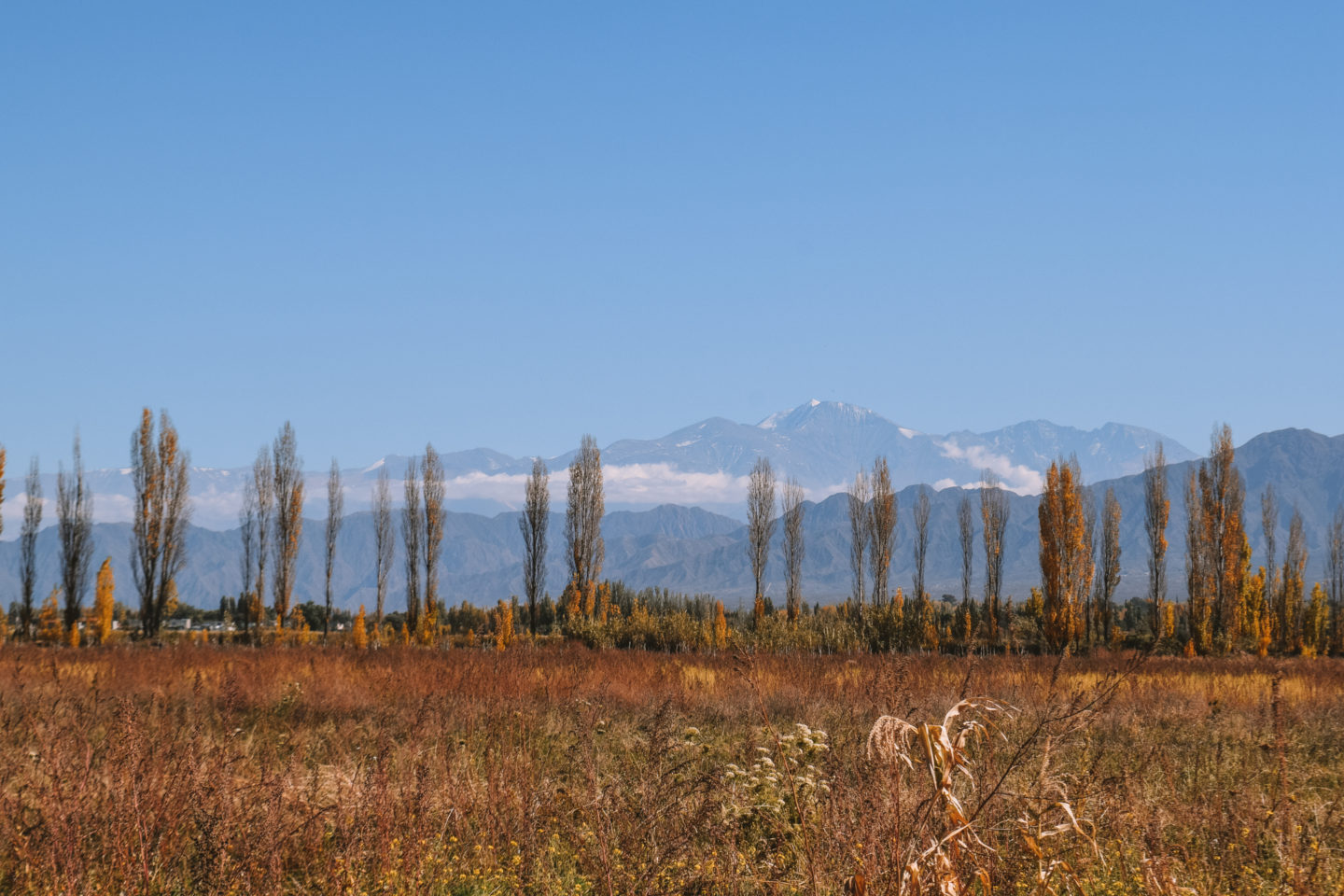
We opted to visit Uco Valley with the incredible Ampora Wine Tours. They take you to 3 different wineries of different sizes where you learn about the wines and of course, taste them. At the 3rd winery, they take you to you enjoy a 3-course lunch each paired with a different wine. A really lovely experience if you’re into wine (which, coming to Mendoza, you probably should be!)
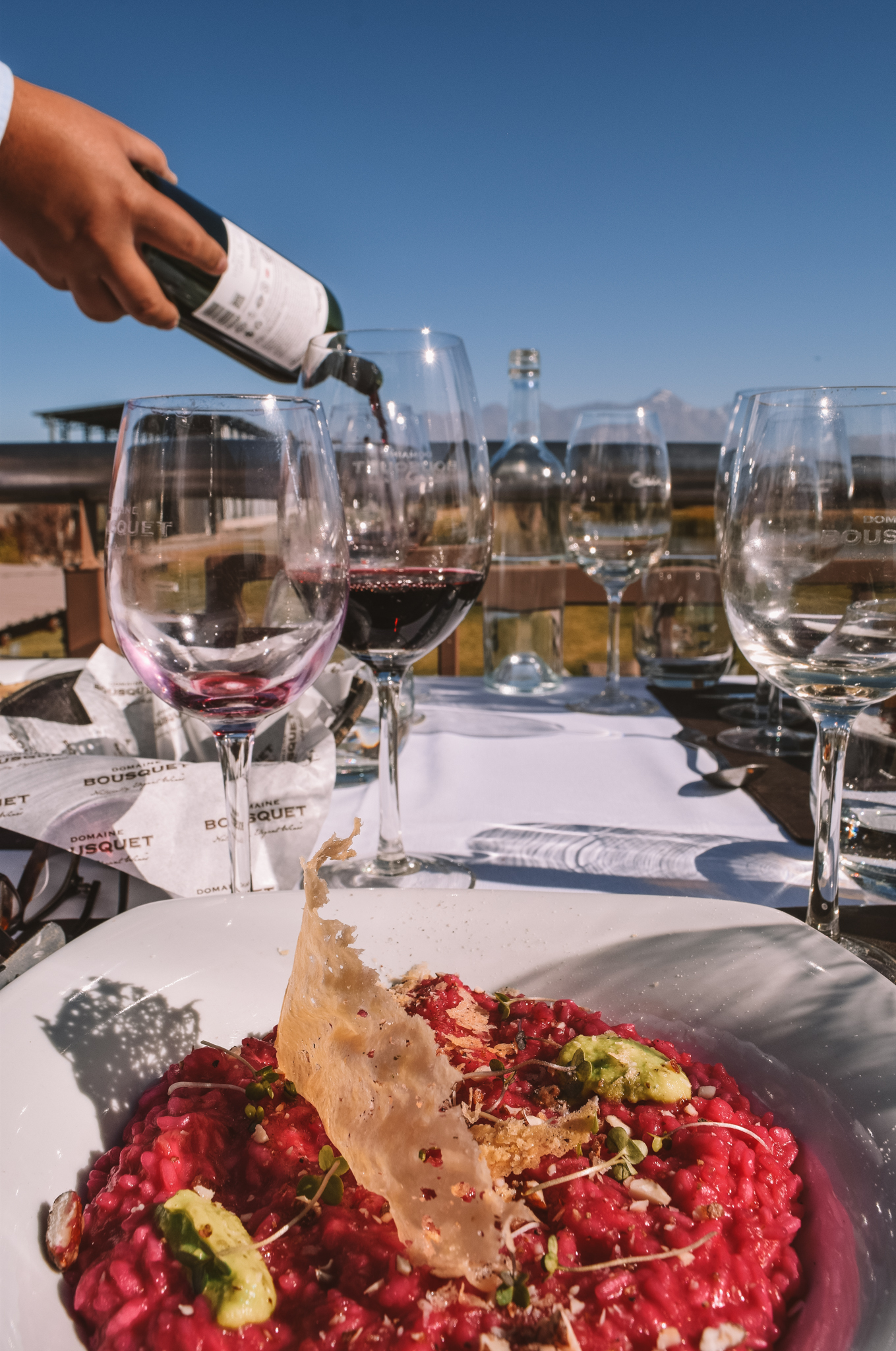
If wine isn’t your thing, then you probably shouldn’t visit Mendoza. We’re kidding, obviously. There’s plenty more to see in Mendoza besides wine. We have listed some below:
Horseback riding in the Andes
Ride a horse through the beautiful Andes mountains. You might not want to drink at a Vineyard but you can still marvel at how beautiful they are.
Paragliding from Cerro Arco
One for the adrenalin junkies, paraglide over the incredible Andes mountains and marvel at the vineyards and natural beauty.
Visit the olive groves
Wherever there are vineyards, there are beautiful olive groves and Mendoza is no exception. If you’re not into wine then opt to taste some incredible olive oil instead.
Bariloche
Bariloche, formally known as San Carlos de Bariloche, is home to the start of Patagonia, and the start of our Patagonia road trip (blog post coming soon!) Bariloche is an incredibly beautiful city surrounded by tons of beautiful lakes and mountains. Founded by Germans the town has a very Bavarian feel to it even complete with Christmas shops and an abundance of chocolate shops – We enjoyed some of the best hot chocolate we’ve ever had here.
Where did we stay in Bariloche?
Bariloche has an abundance of different places to stay including various hostels and hotels. Some in the centre and some out down by the lakes. We opted for quite a budget, yet centrally located place to stay in Bariloche. It had everything we needed and nothing we didn’t. A low-frills hotel that was warm and central, all we needed during our time in this snows town. Another good option is the Selina just outside of the city centre.
What did we see in Bariloche?
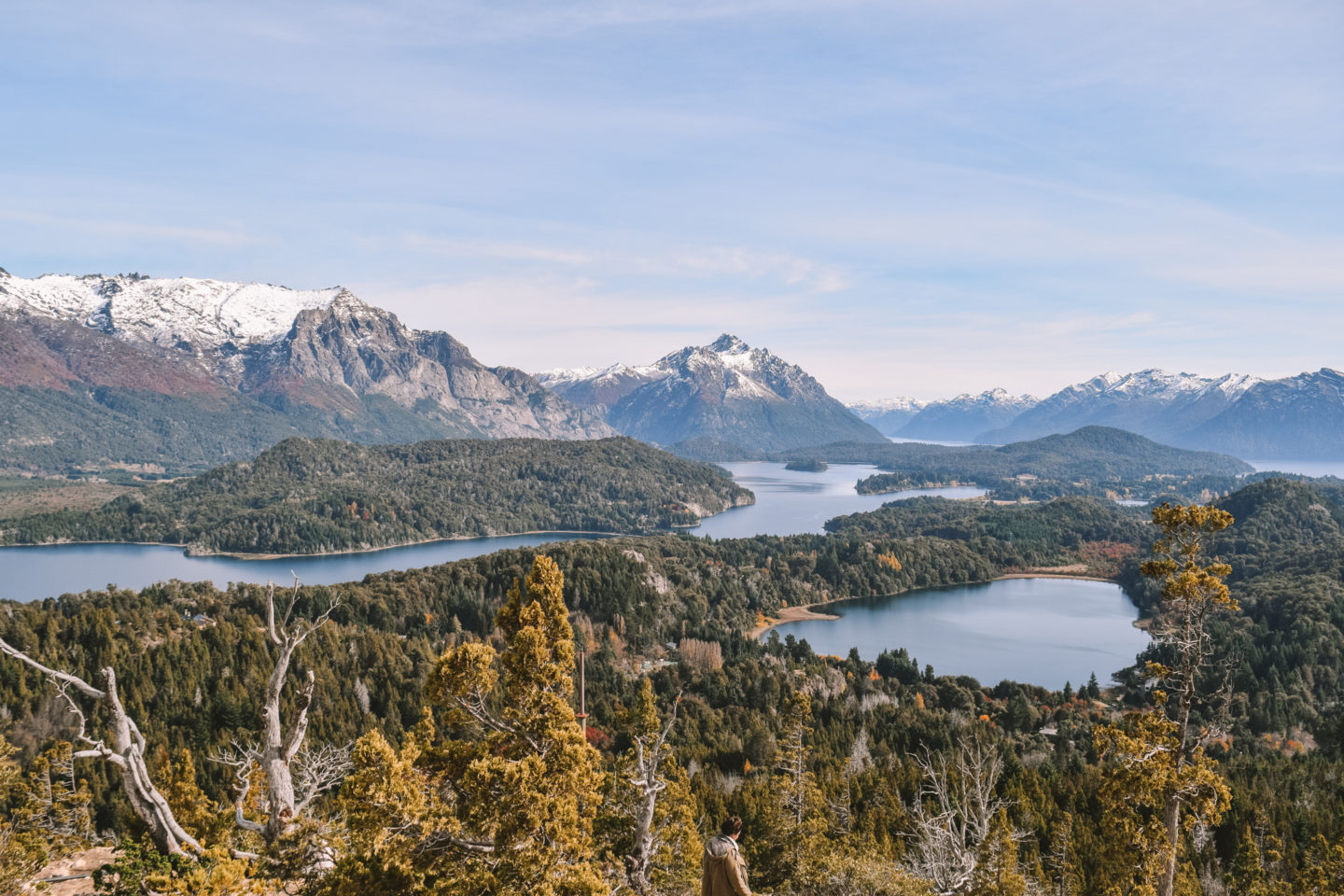
Part of Argentina’s Lake District and northern Patagonia, the popular tourist destination of Bariloche is filled with incredible scenery, tons of hiking, and lots of amazing outdoor adventure activities. Known as Patagonia’s “light,” the town is an incredible place to visit all year round, with visitors and locals also being able to go skiing at the nearby Cerro Catedral during the wintertime.
Cerro Campanario
Cerro Campanario is a quick but steep hike up which quickly rewards you with sweeping views of Nahuel Huapi National Park, and you can either walk or opt to take the chairlift up. We opted to hike to save on budget, the chairlift costs around £8 each way. However, it did look super fun!
Along with the insane panoramic viewpoint, there’s a little cafe at the top where you can grab a coffee or a snack at the top. To get here, just take one of the regular buses from Bariloche along Avenida Bustillo about 20 minutes to the trailhead and chairlift. However, you can’t pay for the bus with cash or a bank card so make sure you pick up a bus card in town beforehand. Or, if you don’t the bus driver will awkwardly shout for someone to pay for you when you get on the bus, you can then give that person the cash. This is what happened to us.
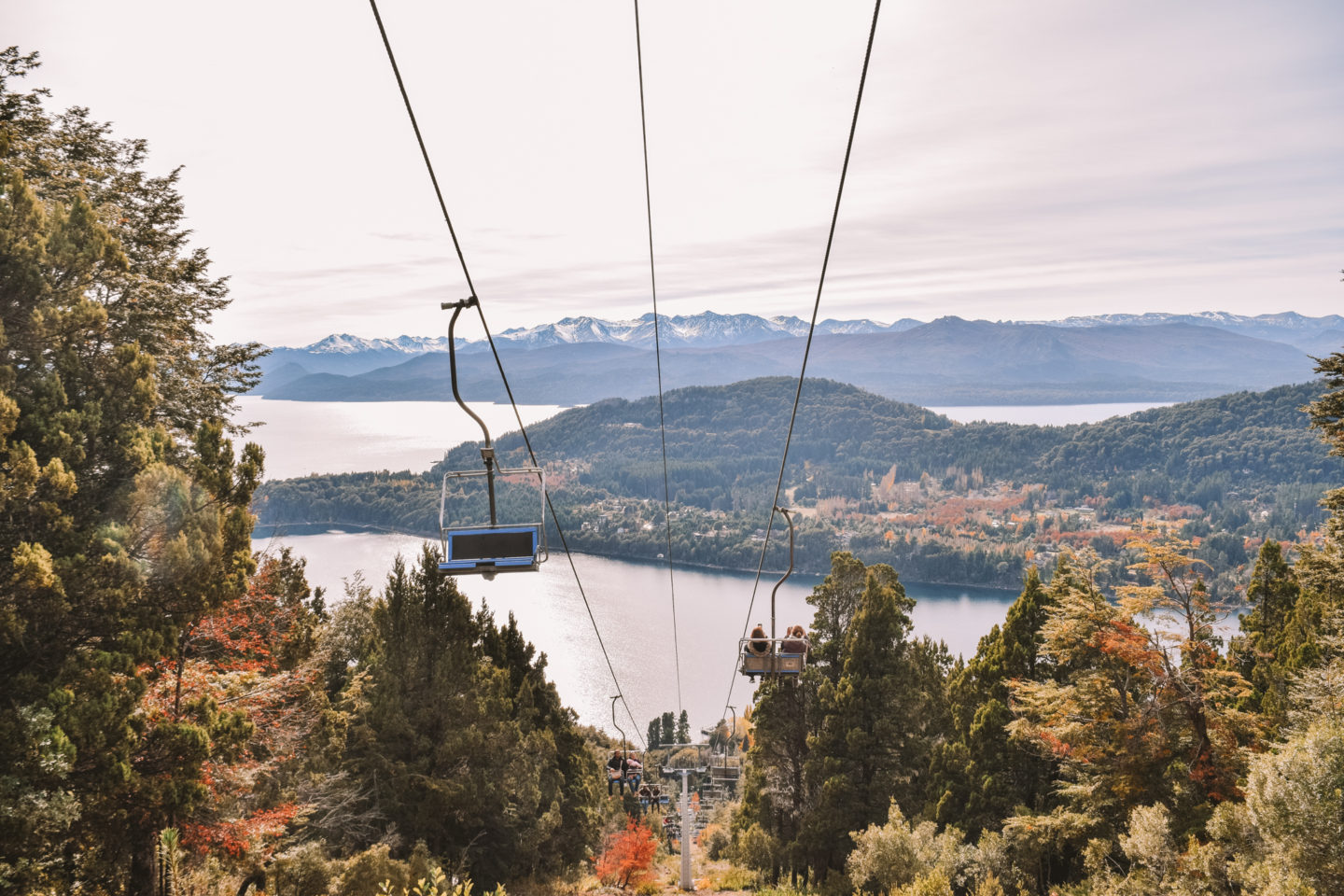
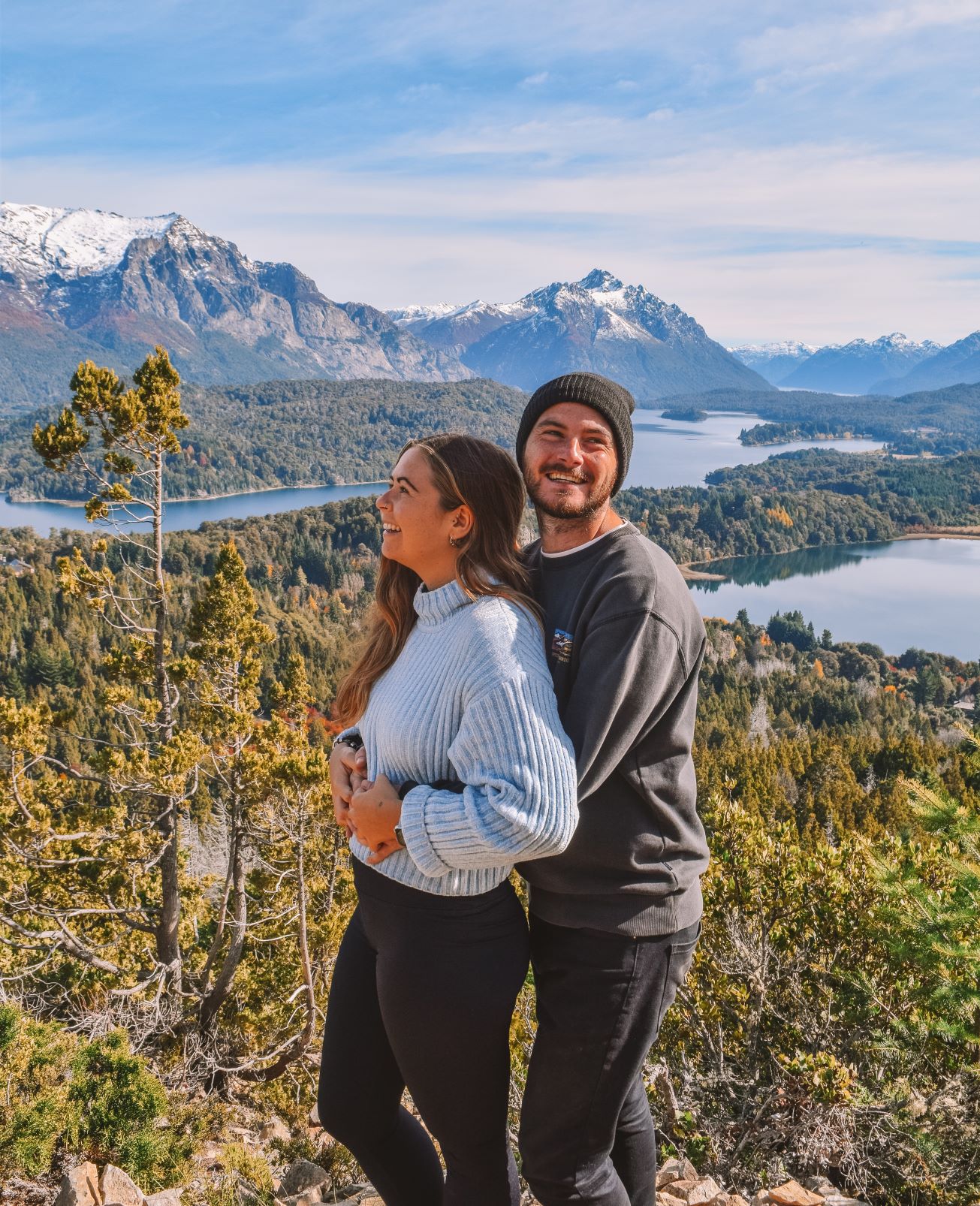
Visit the lakes
There are 7 main lakes around Bariloche – Machónico, Escondido, Correntoso, Espejo, Lácar, Falkner, and Villarino – set amidst the snow-capped Andes before arriving in San Martín. All incredibly beautiful and worth visiting.

Take a walk around the town
You could spend ages walking around the little Bavarian-Esq town, looking in all of the little shops, enjoying a coffee or hot chocolate or even a cheese fondue if you’re feeling lavish.
Enjoy some chocolate (hot or cold)
Bariloche isn’t called Little Switzerland for nothing! The main town is filled with chocolate shops with tons along the main high street of Bartolomé Mitre. We had some of the best hot chocolate we have ever tasted from Rapanui, one of the most popular stores in the town.
Take a day trip to El Bolsón
El Bolson actually ended up being our last stop on our Patagonia road trip, however, you can easily visit here as a day trip from Bariloche. A cute little town surrounded by mountains and known for craft beer it’s a perfect day trip if you have a fair bit of time in Bariloche.
Argentina is an incredible, diverse country with so so much to see. You could easily spend 6 months here and still not see and experience it all. But, if you’re strapped for time hopefully our highlights guide will give you the necessary inspiration to see a few of our highlights from our travels around Argentina.
